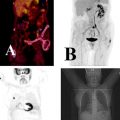and Adam Sciuk2
(1)
Department of Nuclear Medicine, Resurrection Medical Center, Chicago, IL, USA
(2)
Department of Radiology, Resurrection Medical Center, Chicago, IL, USA
Abstract
The Positron Emission Tomography specialty exam is administered by Nuclear Medicine Technology Certification Board (NMTCB). Once you decide to take the exam, the first step you should take is to visit its web site and familiarize yourself with the test information provided. Make the effort to know the intimate details of NMTCB’s exams. The PET exam is now available “on demand.” This means that once you are notified that your application has been approved, you may choose when you’d like to take it, as opposed to a designated one-time examination date.
The Positron Emission Tomography specialty exam is administered by Nuclear Medicine Technology Certification Board (NMTCB). Once you decide to take the exam, the first step you should take is to visit its web site and familiarize yourself with the test information provided. Make the effort to know the intimate details of NMTCB’s exams. The PET exam is now available “on demand.” This means that once you are notified that your application has been approved, you may choose when you’d like to take it, as opposed to a designated one-time examination date.
Multiple choice is the most common test format for standardized tests. It helps to understand the basic setup of this type of a test before tackling it.
A multiple-choice test is composed of three elements: stem, options, and distractors. The stem is the basic problem, and it may be either a question or an incomplete statement. Options are the list of responses available. The list contains one correct answer, and the remaining ones act as the distractors. The distractors are designed to appear as a plausible answer. You, as the test taker, must choose the best answers from the list of alternatives. Now, multiple-choice questions are, in fact, objective questions; they are based on information without the ambiguity of test taker’s opinion or interpretation. This, coupled with the known and structured test format, allows the candidate to actually approach the test strategically.
Let us lay down the different methods and strategies for taking the multiple-choice test.
Cover the list of responses with your hand, read the stem carefully, and actually try to answer the question before looking at the possible choices. By doing so, you will not be negatively influenced or confused by the available choices. Pick the response which best matches your initial answer.
Read the stem thoroughly (you can write down the important words), determine what is being asked, and then read all the answers carefully. Compare each choice to what you think is the correct answer, eliminate the obviously incorrect answers, and choose your answer from the remaining options.
Another useful approach is to read the stem together with each of the options, one by one. Treat each combination as if it was a True/False question. If the combined statement is false, you can eliminate that option; if it appears to be correct, mark it as a possible answer. Repeat this for all alternatives.
For questions that are more complicated or difficult, try to simplify the stem, and summarize or rephrase the answers. In this way, both the stem and the options will be clearer, and make more sense to you, making the question more manageable.
If none of the choices available to you match your predetermined answer, you can use one of the following techniques to narrow down to the probable answer:
Usually the positive answer or the longer/st response with most information is more likely to be the correct.
Stay updated, free articles. Join our Telegram channel

Full access? Get Clinical Tree




